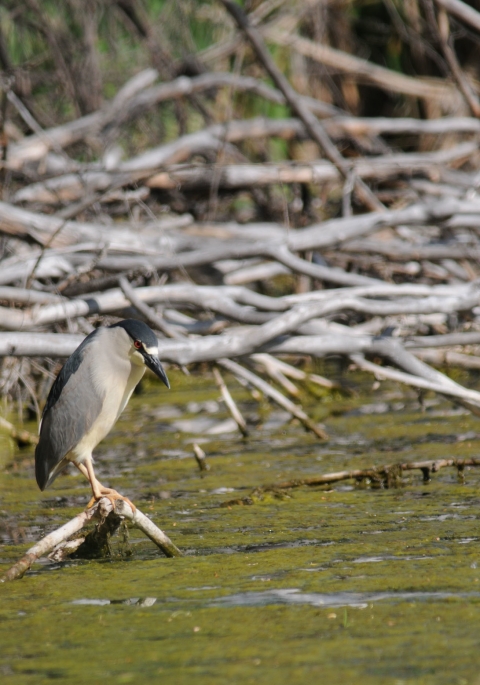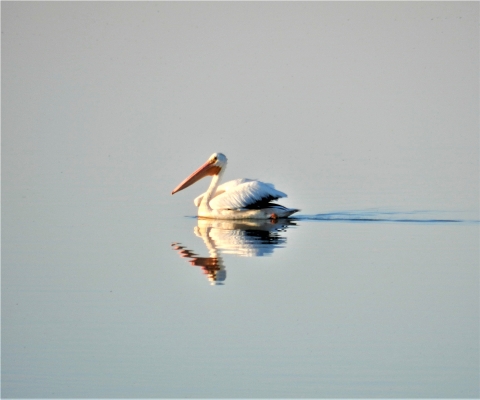Seasons of Wildlife
Spring
Resident Canada geese set up nesting territories on the Snake River islands in early March, and goslings hatch by mid-April. At the same time, large numbers of white-fronted geese gather on the Snake River below Homedale and Weiser for up to a month before continuing their northward migration.
Bald eagles, osprey and great horned owls nest on both sectors of the Refuge, with most feeding their young by the end of April. Getting a slightly later start, great blue herons, black-crowned night herons, and double-crested cormorants nest in large rookeries on some of the Snake River islands in April and May.
Summer
In early summer, western grebes dance on Lake Lowell while resident Bald eagles look for food for their young. Visitors can see large numbers of white pelicans on the lake and large broods of Canada geese on pastures and fields adjacent to the Snake River.
By late July and early August, mallards and wood ducks begin to congregate on the lake, looking for food in flooded vegetation. As summer progresses the lake is slowly drawn down for irrigation, encouraging large numbers of shorebirds to come and feed insects and seeds on the open mudflats. Look for dowitchers, sandpipers, godwits, yellowlegs and plovers.
Featured Species
The Refuge provides habitat for a number of birds that are considered to be species of concern. The conservation efforts of state and/or federal agencies often target these species because research indicates that their populations are declining. To learn more about species of concern on the North Platte National Wildlife Refuge or in the state of Nebraska, consider viewing the Refuge’s Comprehensive Conservation Plan and Nebraska’s Wildlife Action Plan.
As many as 20 Bald eagles and over 200,000 waterfowl may concentrate on the Refuge during fall migration. Well over 200 bird species have been observed on the Refuge since 1975.
Some of the fish species found in Refuge lakes include walleye, crappie, yellow perch, wiper, northern pike, white bass, catfish, and carp.
Mammals common to the Refuge include raccoon, striped skunk, black-tailed prairie dog, eastern cottontail, pronghorn, and mule and white-tailed deer.
The second successful Bald eagle nest in Nebraska in over 100 years occurred on the North Platte NWR in 1993. Remarkably three eaglets were reared to flight stage.
Since European contact in North America, more than 99% of tallgrass prairie has been destroyed primarily because of conversion to agricultural uses (Betz, 1986; Solecki and Toney, 1986; Hands et al., 1989). Undisturbed, tall grass cover is not only valuable for nesting waterfowl, it provides habitat for other species, including pheasants, grouse, bitterns, northern harriers, short-eared owls, and many passerine (perching) birds.





